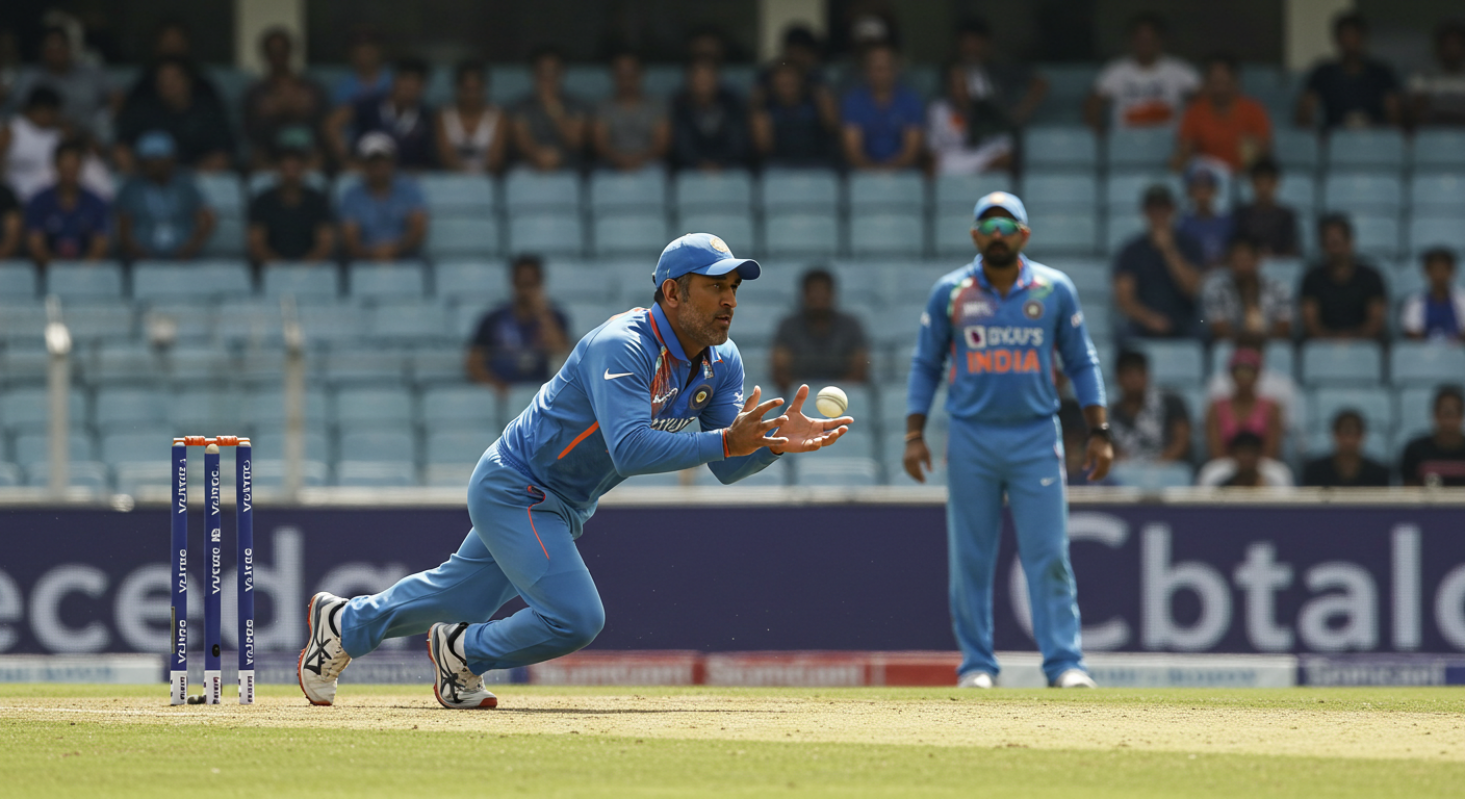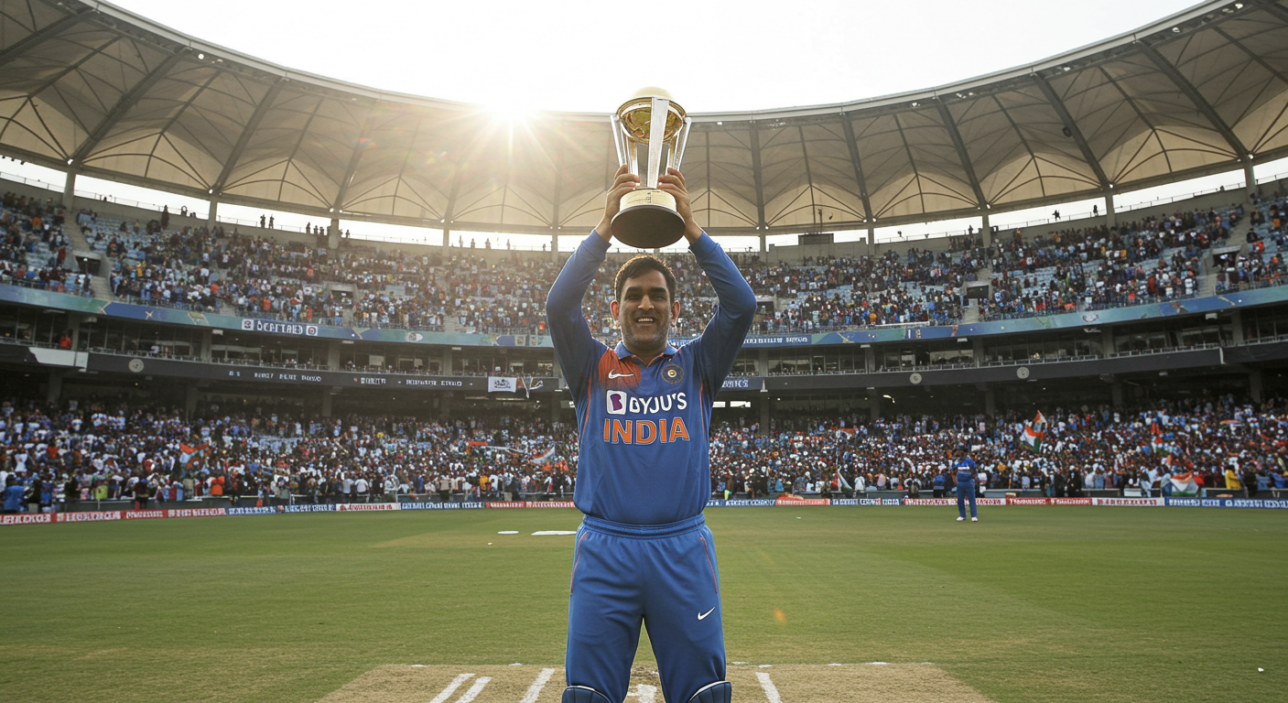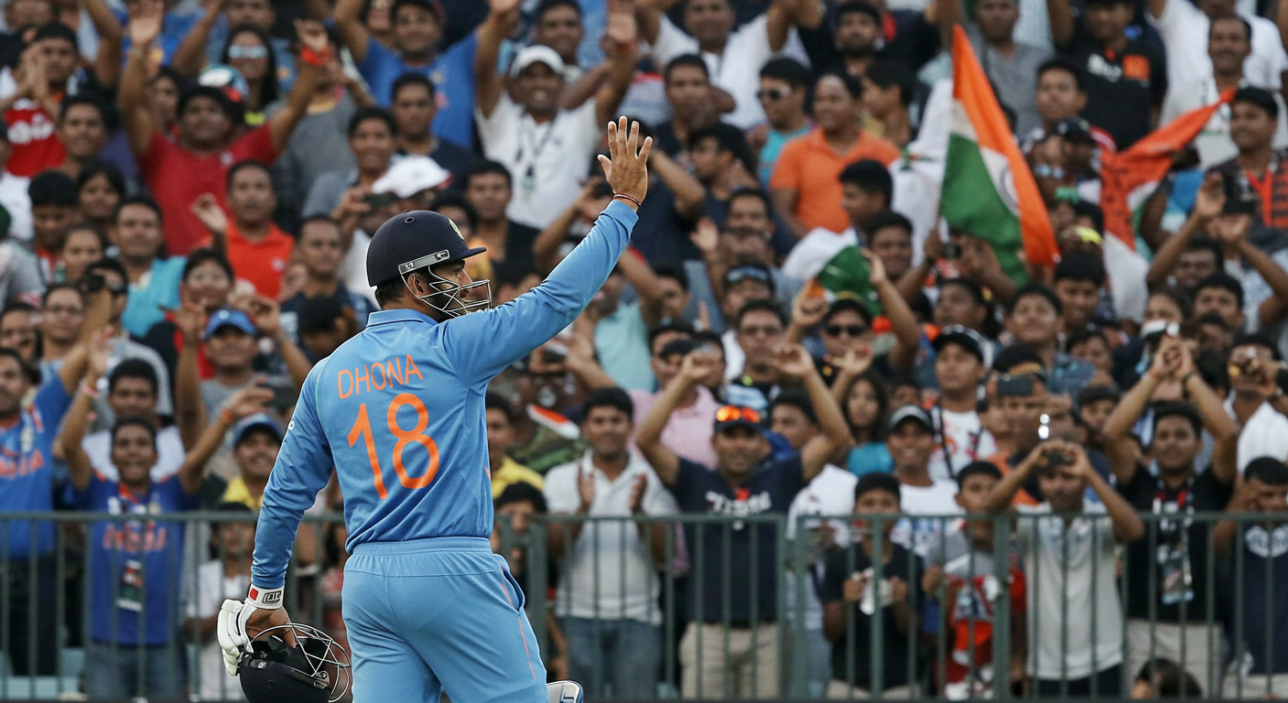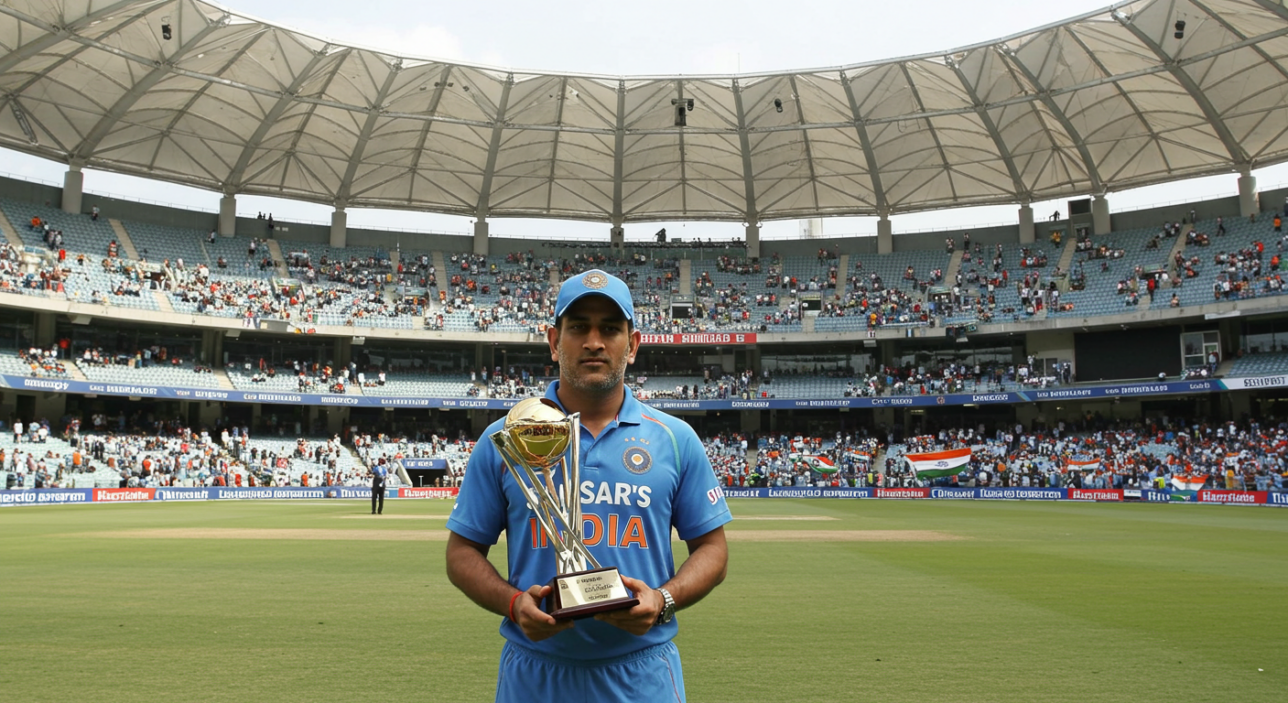
MS Dhoni’s Legacy: Instinct, Ice, and Infinite Calm
MS Dhoni is more than a name in cricket — he is a phenomenon. From Ranchi to the World Cup podium, he reshaped India’s cricketing mindset with steel, silence, and staggering self-belief. His legacy isn’t defined by flamboyance but by timing — knowing when to wait, when to strike, and when to do the unthinkable.
A finisher, a captain, a wicketkeeper, and above all, a strategist with ice in his veins, Dhoni made pressure feel like a playground. He didn’t just play the game — he changed the way the world watched it.
This article explores how MS Dhoni rose from obscurity to become one of the most composed and instinctive leaders cricket has ever known — and why his legacy continues to shape every format of the game today.
MS Dhoni’s Rise: From Small-Town Hope to National Icon
![]()
MS Dhoni emerged from Ranchi, a city with no cricketing pedigree, and bulldozed his way into the national side in 2004. His early innings were chaotic brilliance — none more iconic than the 148 vs Pakistan in 2005, followed by an unforgettable 183 against Sri Lanka* later that year.
What struck fans and critics alike wasn’t just the power — it was the poise. Dhoni played like he had nothing to lose, but his shot selection revealed a mind already mapping the field. His helicopter shot wasn’t just flair — it was invention.
At a time when India leaned heavily on classical technique, Dhoni was raw, rural, and ruthless. He didn’t fit the mould. And that’s exactly why he broke it.
Captaincy: Calm Decisions, Cold Nerves
MS Dhoni’s captaincy debut came in the T20 World Cup in 2007 — a tournament India entered with scepticism and little hope. Yet under Dhoni, they lifted the trophy. Not by dominating, but by staying calm when others cracked.
It was Dhoni’s decision to back Joginder Sharma in the final over — over more experienced bowlers — that cemented his reputation as a leader who backed instinct over tradition. And it paid off.
As captain across formats, Dhoni brought clarity, trust, and emotional control. He gave players freedom, shielded them from criticism, and never let the scoreboard dictate his mood.
While others flinched, MS Dhoni stayed still — calculating, trusting, and walking the talk. He didn’t just win games — he altered careers and rewrote expectations.
MS Dhoni’s World Cup Triumph: The Defining Shot of a Generation

MS Dhoni’s legacy was immortalised on the night of 2 April 2011, when he launched Nuwan Kulasekara into the Mumbai night sky to seal India’s second-ever ODI World Cup. It wasn’t just a six — it was a statement. Of belief, of strategy, of timing.
Throughout the tournament, Dhoni had been subdued with the bat, preferring to promote others. But in the final, he made a defining call: promoting himself above the in-form Yuvraj Singh. Critics raised eyebrows. Dhoni simply walked in, assessed the pitch, and built the chase with a calmness that belied the occasion.
He finished on 91 not out, guiding India home in a final filled with pressure and emotion. But it wasn’t just about the runs. It was about how he read the game, absorbed the tension, and backed himself when it mattered most.
That World Cup final wasn’t just Dhoni’s greatest match — it was the embodiment of his leadership style: brave, grounded, and deeply intuitive.
The image of MS Dhoni twirling his bat after the winning six is etched into the sport’s collective memory — not just because of the shot, but because it symbolised calculated brilliance under the heaviest weight of expectation.
Keeping and Captaincy: Dual Roles, Singular Composure
MS Dhoni wasn’t just one of the game’s sharpest captains — he was also one of its most effective wicketkeepers, a rare dual role in the modern era. What made him exceptional was the way he juggled both without ever appearing overwhelmed.
Behind the stumps, Dhoni was electric. His lightning-fast stumpings became the stuff of legend, with dismissals clocked at speeds few could match. He didn’t rely on flamboyant dives — just anticipation, positioning, and pure reflex. His glovework was quiet but clinical.
As captain, he used his vantage point to orchestrate the field. He read the batters, observed patterns, and made field changes in seconds. His decisions weren’t always textbook, but they were effective — and often years ahead of their time.
He understood his bowlers, especially spinners, better than most. He’d whisper advice mid-over, shift a fielder without fuss, and draw mistakes out of batters with subtle pressure.
In doing so, MS Dhoni redefined what it meant to lead from behind. He proved you didn’t need to shout, gesture, or perform. You just needed to watch, wait, and act when the moment called.
Few have ever combined captaincy and wicketkeeping with such quiet mastery — and none with such enduring success.
The IPL Phenomenon: Building a Dynasty in Yellow

MS Dhoni’s second legacy — after captaining India — was written in yellow. From the moment he was signed by Chennai Super Kings (CSK) in the inaugural IPL auction in 2008, the bond between player and franchise became legendary.
Under Dhoni’s leadership, CSK didn’t just win titles — they built a culture. With a calm centre and a fiercely loyal fanbase, Chennai became a model franchise, reaching a record number of playoffs and finals. Through it all, Dhoni remained the constant: unflinching, unflappable, and unwavering.
What stood out wasn’t just the wins. It was how Dhoni managed ageing squads, emerging players, and high-pressure situations with equal poise. While other teams chopped and changed, CSK retained core players — a reflection of Dhoni’s belief in continuity and trust.
He led CSK to five IPL titles, the latest in 2023, even as questions about his retirement swirled. Each season, fans and critics asked if it would be his last — and each time, he let his bat, gloves, or captaincy do the talking.
In a format built for flair, MS Dhoni gave us structure, calm, and a masterclass in sustained excellence. He didn’t just play the IPL. He shaped it.
Leading Without Words: Mentorship and Modern Legacy
MS Dhoni’s leadership didn’t end when he stepped down as India’s full-time captain. In fact, some of his most influential work came in the years after — as a mentor, sounding board, and senior figure in the dressing room.
He never craved the spotlight. He didn’t chase records. But younger players like Hardik Pandya, Rishabh Pant, and Ravindra Jadeja have often spoken about his quiet guidance — advice shared off-camera, words given when needed, silence respected when not.
Dhoni didn’t micromanage. He trusted his players to make their own mistakes, learning the hard way as he once had. That trust built resilient cricketers — players unafraid to take responsibility, because their captain never played the blame game.
During his final years with India, Dhoni became the strategic core of the side. Virat Kohli may have worn the armband, but it was often Dhoni behind the stumps orchestrating the field, offering subtle cues, and reading the opposition like a book.
And when he finally walked away from international cricket, he did it in true Dhoni style — no farewell tour, no emotion-laden send-off. Just a message: “Consider me retired.”
In doing so, he reminded everyone once again: legacy isn’t always in what you say. Sometimes, it’s in what you leave behind.
The Global Influence: Rewriting the Leadership Manual

MS Dhoni’s impact was never limited to Indian cricket. Around the world, coaches, players, and analysts began rethinking what leadership in high-stakes sport could look like — not just barking instructions, but observing, absorbing, and acting with conviction.
He wasn’t a fan of long team meetings or dramatic speeches. His methods were minimalistic. A glance to a bowler. A nod to a fielder. A decision made in silence, but with full belief.
Young captains in the IPL and beyond began emulating this style. Calm became cool. Composure became aspirational. And instinct — once dismissed as luck — was now recognised as a refined skill built on trust, timing, and intuition.
Even off the field, Dhoni’s brand of leadership has made waves — whether in the Indian Army where he holds an honorary rank, or in business and mentorship roles that prioritise team culture over hierarchy.
In a sport often obsessed with technique and numbers, Dhoni reminded us that timing of thought is just as crucial as timing of shot.
Legacy Etched in Simplicity and Steel
MS Dhoni’s name is now a shorthand for calm under pressure. He’s not just remembered for his finishing ability or captaincy record — he’s remembered for the way he looked unshaken in the most volatile situations. It wasn’t just what he did. It was how he carried himself while doing it.
From lightning-fast stumpings to match-winning sixes, Dhoni turned complex moments into simple outcomes. That unforgettable shot in the 2011 World Cup final wasn’t just a winning run — it was a finishing flourish that embodied unflinching clarity. His signature cross-armed stance after a successful finish became as iconic as the achievements themselves.
And yet, Dhoni never sought the spotlight. He spoke less, celebrated less, and deflected praise more than perhaps any other Indian cricketing icon. That humility — paired with steely intent — made him uniquely relatable. Whether in village grounds or stadium stands, fans saw in Dhoni not just a star, but a symbol of grit without noise.
He didn’t chase legacy. He let it form in his wake — with every unorthodox decision, every last-over chase, and every player he backed who later delivered for India. His impact stretches beyond statistics; it lives in values passed down to a generation of cricketers learning that pressure is a privilege.
There will be other finishers. Other captains. Other keepers. But someone who merged all three roles, with such calm command, and walked away at the peak — that’s rarefied territory. That’s MS Dhoni.
Conclusion: Why MS Dhoni’s Legacy Still Matters

MS Dhoni didn’t just change results — he changed perspectives. In a country bursting with passion, he introduced poise. In a format built for chaos, he offered clarity. And in a world that often confuses noise with authority, he proved that real leadership can be quiet, instinctive, and razor-sharp.
His legacy isn’t in just the trophies, stumpings, or sixes. It’s in the young cricketer choosing composure over impulse. The captain trusting instinct over analytics. The fan who still believes, because Dhoni taught them how to.
Even in retirement, Dhoni remains cricket’s calmest influence — a man who proved you don’t need to shout to be heard. You just need to deliver when it matters, and walk away without looking back.
MS Dhoni’s story is finished. But his legacy? That will outlast the game itself.





